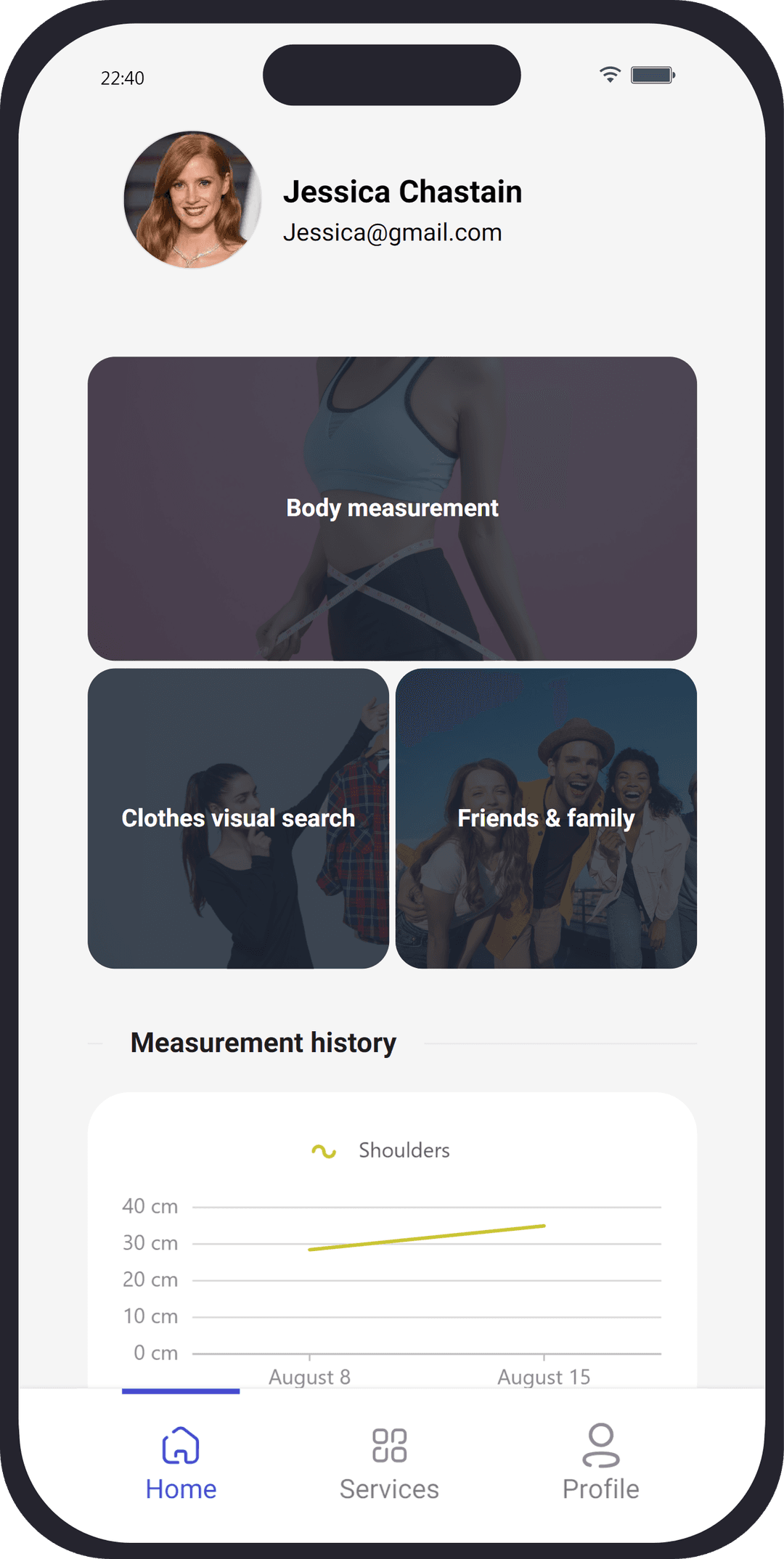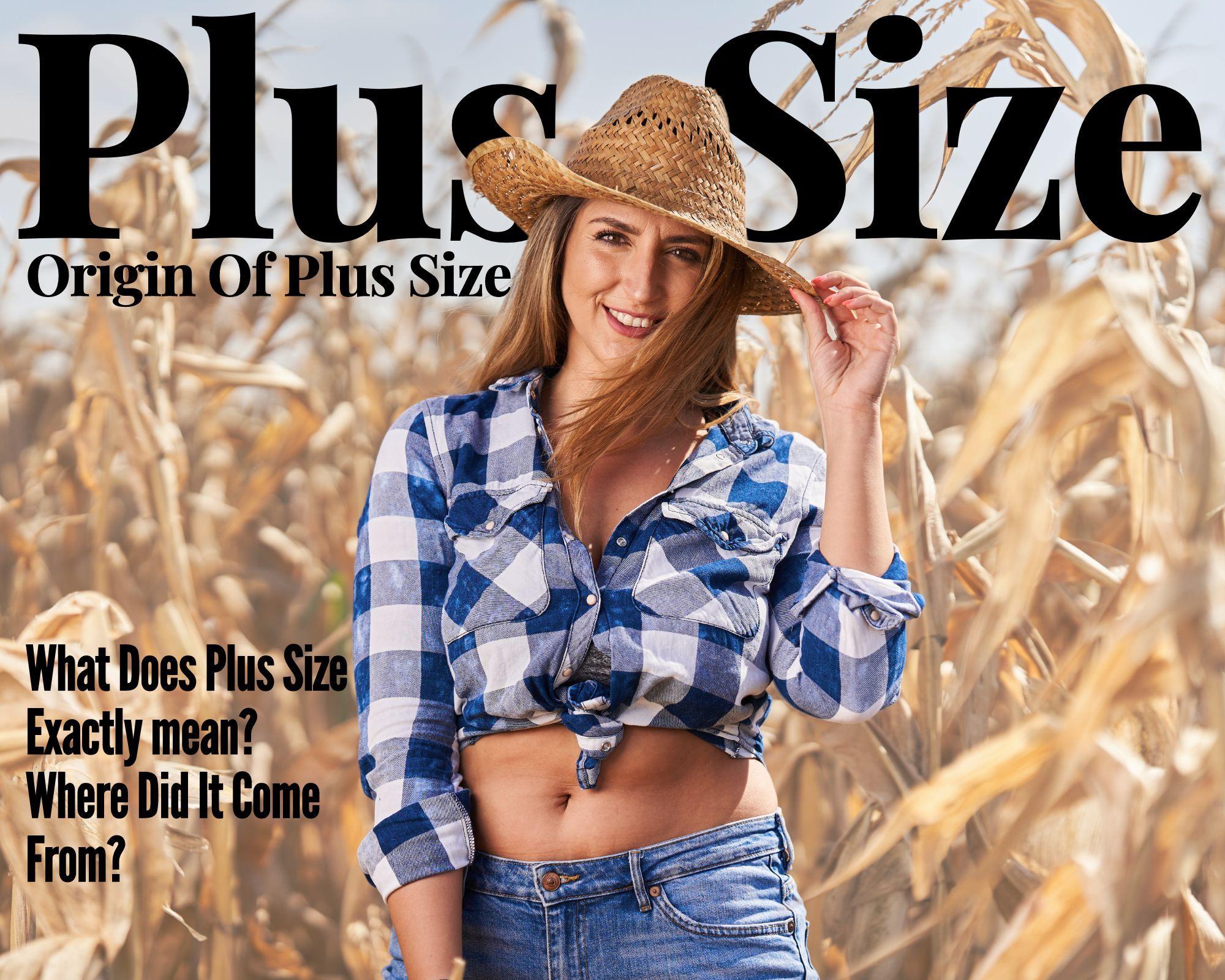
What Exactly Does 'Plus Size' Mean and Where Did It Come From?
Plus size, a term defining clothing for individuals beyond traditional size ranges, emerged as a positive departure from stigmatizing labels prevalent in early 20th-century fashion. It reflects a pivotal shift towards inclusivity, celebrating diverse body shapes. Dive deeper into our blog to explore the origin and evolution of 'plus size,' understanding its cultural significance and the journey that reshaped the fashion industry's perception of body image and beauty standards.
The history of plus-size fashion is a profound narrative that tracks the evolution of societal norms, perceptions, and the fashion industry's response to diverse body types. From the early 20th century's stigmatizing terminology like "stout" or "outsize" to the revolutionary emergence of the term "plus size" in the late 20th century, it's a journey reflecting a societal shift toward inclusivity. This transformation didn't end with terminology; it extended to celebrate and accommodate a spectrum of body shapes and sizes, marking a departure from exclusive fashion standards.
This evolution didn't emerge in isolation. It's woven with the strides of influential figures challenging norms, from pioneering models like Emme Aronson to the contemporary digital revolution amplifying the chorus of body positivity. The fashion landscape now resonates with diverse representations, diverse runways, and a redefined standard of beauty, echoing a societal quest for inclusivity that's far from over, continually pushing the boundaries of fashion norms and perceptions.
Early Terminology of Plus size
In the early 20th century, fashion terminology was limited and often carried a stigma when describing clothing for individuals whose body measurements fell outside the established standard size range. Terms like "stout" or "outsize" were prevalent in the fashion lexicon, characterizing garments tailored for larger bodies. However, these terms were burdened with a negative connotation, reinforcing the notion of deviation from the perceived norm.
During this era, societal standards heavily favored a particular body type, promoting an idealized and narrow view of beauty. The fashion industry, consequently, reflected these perceptions, catering predominantly to a limited range of body shapes and sizes. This exclusivity marginalized those whose bodies did not conform to the established norms, leading to a lack of adequate clothing options and an absence of representation in fashion media.
In this landscape, influential figures emerged, albeit against the prevailing norms, advocating for a broader acceptance of diverse body types. Women like Mary Duffy and Lane Bryant played pivotal roles in challenging the existing standards. Lane Bryant, for instance, was a significant figure in the early 1900s, founding a company that specialized in maternity clothing and later expanding to cater to larger-sized women. These figures actively promoted the idea that fashion should be inclusive, adapting to various body shapes rather than forcing individuals to conform to a singular ideal.
Despite these influential voices, the fashion industry largely overlooked the diverse needs of consumers. The terminology used, such as "stout" and "outsize," perpetuated a sense of otherness, contributing to the marginalization of those whose bodies did not align with the perceived norm.
This era set the stage for a gradual but significant shift in the perception of body image and fashion. Influential voices, though few and far between, sowed the seeds for a future where inclusivity in fashion would become a focal point. Their early efforts laid the foundation for the eventual evolution of the industry, pushing towards a more diverse representation of body types and a more inclusive approach to fashion. The terms "stout" and "outsize," once commonplace and laden with negative connotations, would eventually give way to more affirming and inclusive language, marking a crucial step in the journey towards acceptance and celebration of diverse body sizes in the world of fashion.
Rise of Plus-Size Fashion
In the late 20th century, a pivotal shift in the fashion landscape occurred with the emergence of the term "plus size." This term marked a significant departure from the stigmatizing language of the past and represented a crucial step towards inclusivity in the fashion industry.
The 1960s and 1970s laid the groundwork for this shift, as societal perceptions of beauty and body image began to evolve. The Civil Rights Movement and the Women's Liberation Movement spurred conversations around inclusivity and representation, demanding equality and acceptance for all. These societal movements influenced the fashion landscape, advocating for a more diverse portrayal of body types.
Throughout this time, influential figures and events contributed to reshaping the fashion industry. In 1977, the establishment of The Council of Fashion Designers of America (CFDA) led to more structured discussions within the fashion community. While initially focused on high fashion and standard sizes, the CFDA discussions eventually expanded to encompass inclusivity and representation of diverse body types.
One of the most significant moments in the journey toward a more inclusive fashion industry was the emergence of influential personalities advocating for change. Women like Emme Aronson, a prominent plus-size model in the late 1980s and 1990s, played a critical role in challenging the prevailing standards of beauty. Emme's visibility in the fashion world served as a catalyst for greater acceptance of larger body types in the industry. Her presence on runways and in ad campaigns sparked conversations and encouraged the reevaluation of beauty norms.
The late 1980s and 1990s witnessed a gradual shift within the fashion industry. Brands and designers, prompted by the advocacy of individuals like Emme, began to consider the diverse needs of consumers. They started creating clothing lines specifically tailored for larger body types, embracing the term "plus size" to cater to those outside the traditional size range. This marked a turning point in the acknowledgment of the diverse market and the fashion needs of a larger demographic.
The introduction of plus-size sections in department stores and the inclusion of larger sizes in designer collections further signified a growing acceptance of diverse body types. Notable moments like the introduction of the plus-size section in the iconic store Saks Fifth Avenue in 1989 and the launching of the first plus-size fashion magazine, MODE, in 1997, were monumental in advocating for inclusivity.
The adoption of the term "plus size" reflected a more positive and inclusive approach to fashion, encouraging diverse representation and the celebration of various body sizes. This era set the stage for a transformative journey toward a more inclusive fashion industry, a journey propelled by influential figures and pivotal moments that reshaped the industry's narrative and practices.
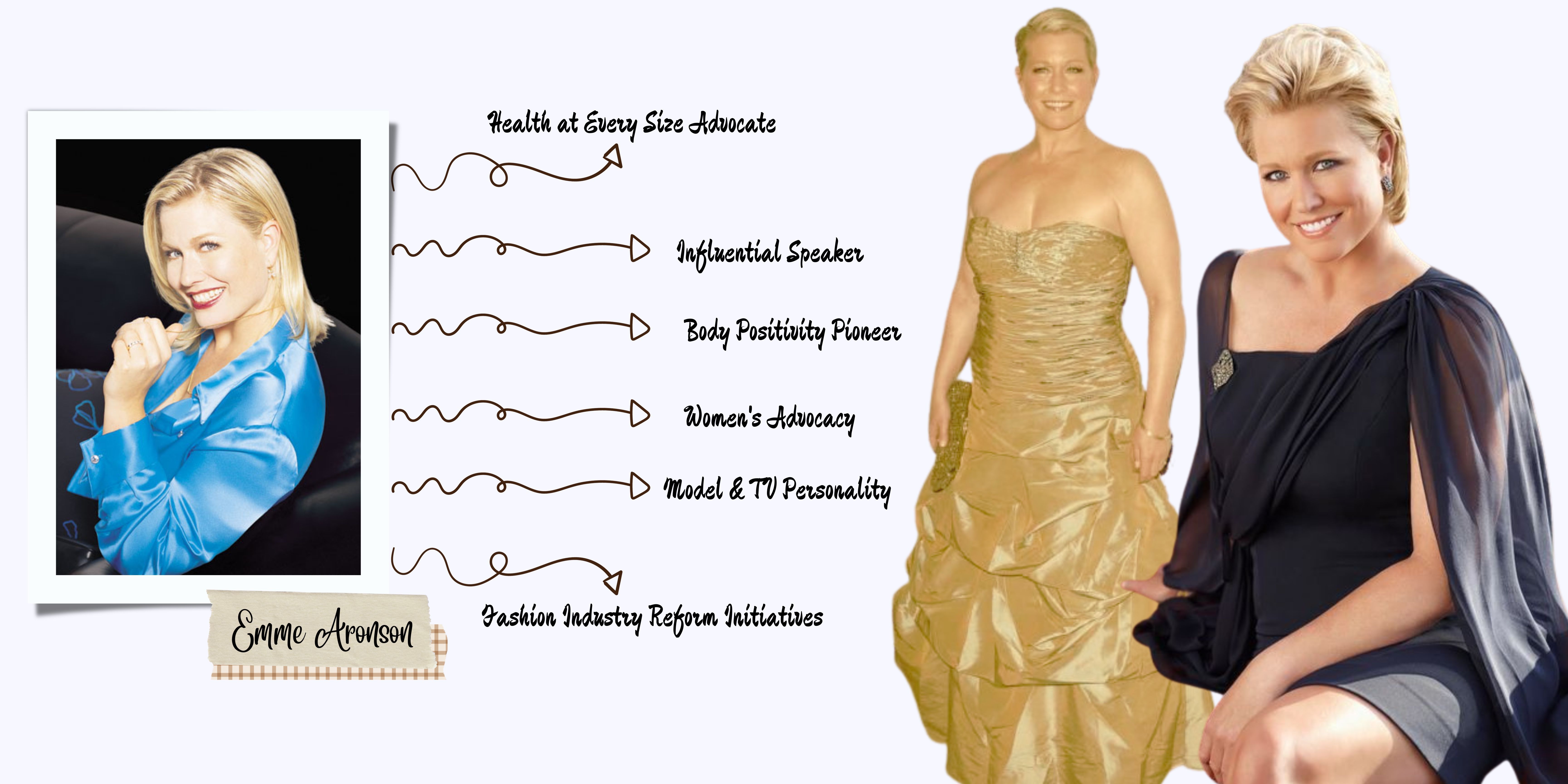 Changing Perspectives
Changing Perspectives
The shift towards body positivity and inclusivity in fashion, specifically within the plus-size segment, represents a monumental evolution that unfolded over several decades. This transformation was not merely a change in terminology or offerings; it was a revolutionary change in perspective, culture, and societal norms. The journey towards celebrating diverse body shapes and sizes has been marked by various influential individuals, pivotal events, and societal movements.
1980s - 1990s: A Pioneering Era for Change
The late 1980s and early 1990s were crucial in shaping changing perspectives in fashion. As already mentioned influential figures like Emme Aronson, a trailblazing plus-size model, challenged traditional beauty standards. Emme's presence on runways and in high-profile campaigns heralded a shift in the industry's perception of beauty. Her visibility prompted conversations about inclusivity and the celebration of various body types.
Around the same time, the fashion industry began to respond to the changing landscape. Brands and designers slowly recognized the untapped market and demand for inclusive sizing. This era saw the birth of plus-size sections in department stores, such as Saks Fifth Avenue introducing its plus-size section in 1989, signifying a significant step towards inclusivity.
1990s - 2000s: The Rise of Body Positivity Movements
As the 1990s progressed into the 2000s, body positivity movements gained momentum. The fashion industry witnessed pivotal moments that contributed to reshaping perspectives. In 1997, MODE magazine made history by being the first mainstream publication dedicated to plus-size fashion. This groundbreaking move provided a platform for representation and celebrated diverse body types, influencing the way the public perceived beauty in the fashion realm.
Simultaneously, society at large underwent a transformation in its approach to body image. The Women's Liberation Movement, the rise of feminism, and the promotion of inclusivity in media influenced changing perspectives. The narrative around beauty standards began to shift, with a greater emphasis on acceptance and celebration of individuality. These changes were not limited to the fashion industry but were part of a broader cultural movement towards diversity and inclusivity.
The 2010s and Beyond: Digital Revolution and Inclusivity
The advent of the digital age further propelled the body positivity movement. Social media platforms provided a stage for individuals to advocate for diverse representation. Influencers and activists used these platforms to challenge norms and advocate for inclusivity in fashion.
In 2015, Ashley Graham made history as the first plus-size model to grace the cover of Sports Illustrated's swimsuit edition, a groundbreaking moment in the history of body positivity. Her visibility and success signaled a turning point in the industry, showcasing that beauty knows no size.
The fashion industry responded to the demand for inclusivity. More designers began featuring diverse body types on runways, and brands expanded their size ranges, aiming to cater to a broader demographic. In 2018, Rihanna's Fenty Beauty brand made waves by launching an inclusive range of makeup, emphasizing diversity in beauty products.
The changing landscape saw an increase in inclusivity and representation, with major fashion shows featuring a more diverse range of models. The introduction of more extended size ranges by mainstream brands indicated a seismic shift in the industry's approach to catering to diverse body types.
This transformative journey toward body positivity and inclusivity in fashion has been a testament to the collective efforts of influential individuals, societal movements, and significant events that have challenged norms and reshaped the industry's narrative. It's an ongoing evolution, shaping a fashion landscape that celebrates and embraces diversity, challenging traditional beauty standards and emphasizing confidence and self-acceptance regardless of size.
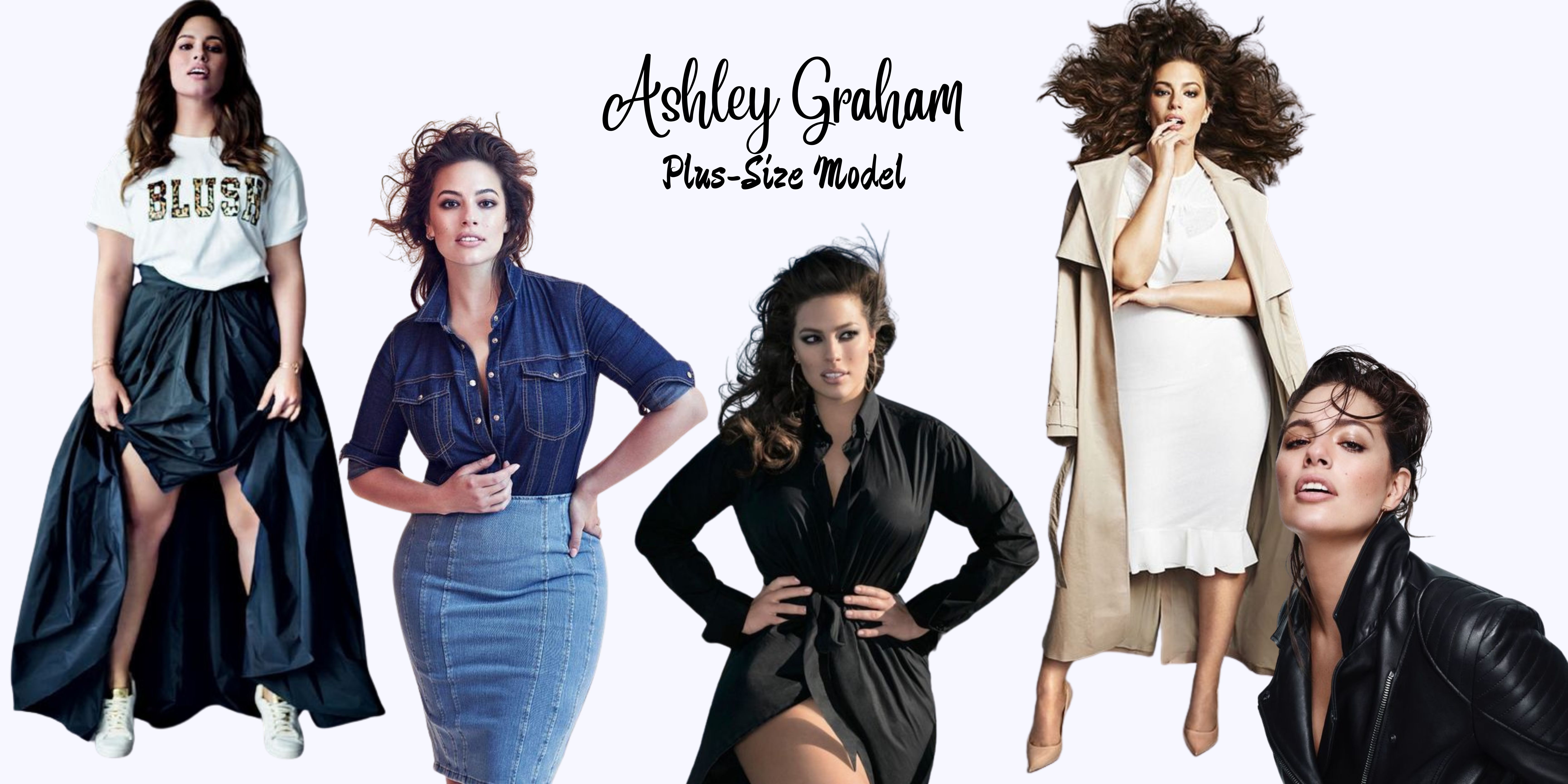
Evolution In Fashion Industry
The evolution of the fashion industry to embrace inclusivity and cater to diverse body sizes represents a significant transformation that unfolded over time, marked by various crucial moments, influential personalities, and the growing demand for inclusive sizing.
Late 20th Century - Early Initiatives
The late 20th century witnessed a turning point as the fashion industry started acknowledging the demand for inclusive sizing. Brands and designers slowly recognized the underserved market of plus-size individuals. One notable moment was the establishment of plus-size sections in department stores, such as Saks Fifth Avenue introducing its plus-size section in 1989, symbolizing a substantial step towards inclusivity.
The acknowledgment of the underserved market prompted several pioneering initiatives. Significant figures like Emme Aronson, a prominent plus-size model, advocated for inclusivity in the industry. Her visibility in high-profile campaigns and runway shows challenged conventional beauty standards, leading to a gradual shift in the industry's perception of beauty.
The New Millennium - A Shift in Perspective
As the new millennium progressed, the fashion industry experienced a paradigm shift. The demand for inclusive sizing grew, prompting more designers to create clothing lines specifically tailored for larger body types. The early 2000s saw the emergence of brands focusing exclusively on plus-size fashion, offering a diverse range of styles and trends previously limited to standard sizes.
In 2000, Lane Bryant, a company known for its early foray into plus-size fashion, launched the Lane Bryant Catalog. This move extended the brand's reach and contributed to the normalization of plus-size fashion in mainstream retail.
The early 2000s also saw the expansion of plus-size representation in fashion media. Models like Crystal Renn and Sophie Dahl made waves in the industry, challenging the conventional norms of beauty and paving the way for more diverse representation. Crystal Renn, in particular, was instrumental in advocating for inclusivity in the fashion industry, being featured in numerous high-profile campaigns and editorials.
Mid-2000s to Present - Embracing Diversity and Empowerment
The mid-2000s to the present day saw a radical shift in the industry's approach to inclusivity. Brands began expanding their size ranges, aiming to cater to a broader demographic. In 2015, the launch of the Ashley Graham x swimsuitsforall collection marked a significant moment, as Ashley Graham became the first plus-size model to appear on the cover of Sports Illustrated's swimsuit edition. This momentous event shattered stereotypes and emphasized that beauty knows no size.
The shift towards inclusivity was further exemplified by major fashion shows featuring a more diverse range of models. The runway began showcasing a broader spectrum of body types, challenging traditional beauty standards.
In 2018, Rihanna's Fenty Beauty brand disrupted the beauty industry by launching an inclusive range of makeup, emphasizing diversity in beauty products. This move was monumental in shifting the beauty industry's standards and encouraged inclusivity in makeup offerings.
This transformative journey in the fashion industry towards inclusivity and diverse representation has been a testament to the collective efforts of influential individuals, pivotal events, and changing consumer demands. It's an ongoing evolution that continues to shape a fashion landscape that celebrates diversity, empowering individuals to express their personal style regardless of size.
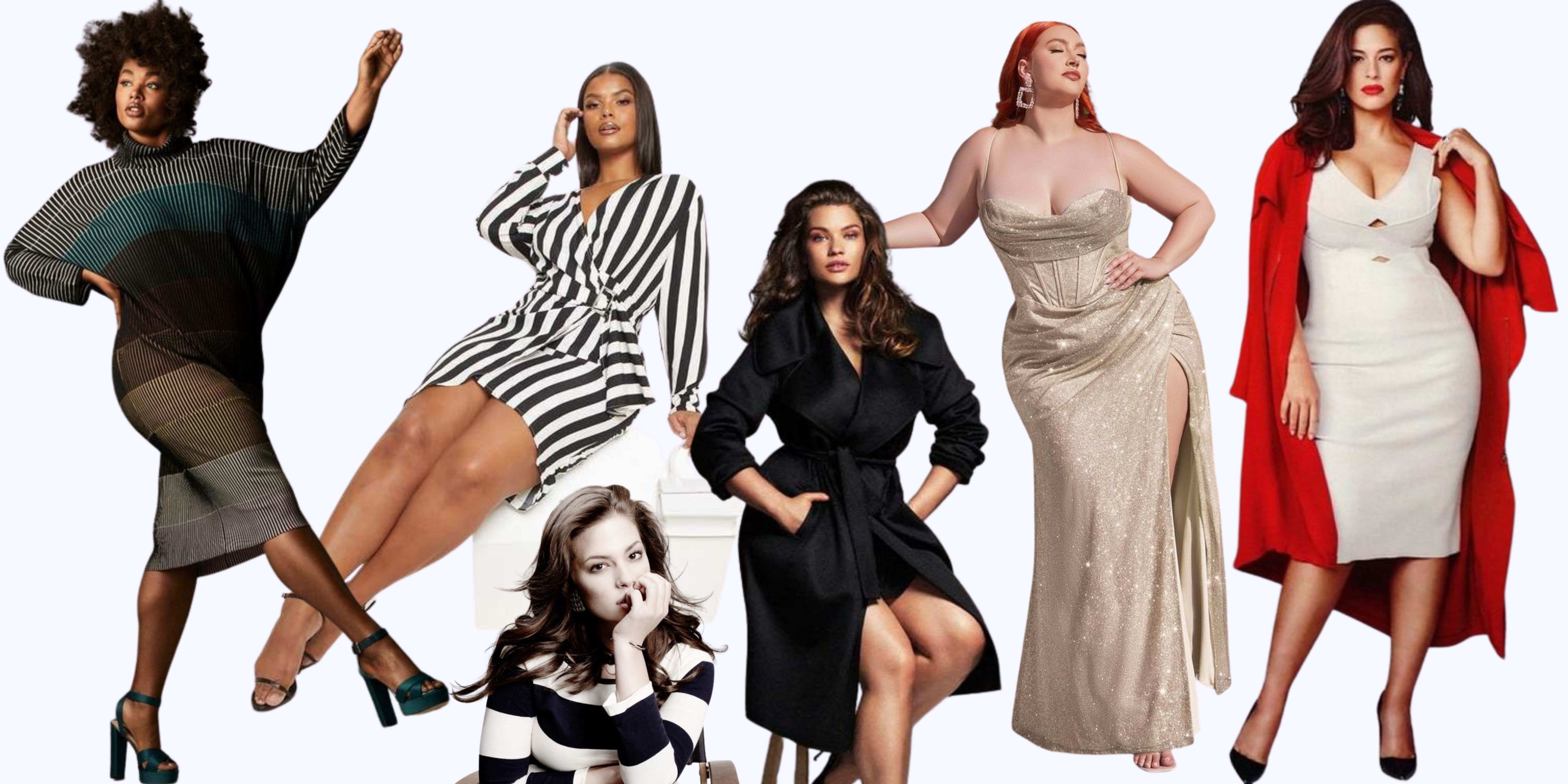
Contemporary Landscape
In the contemporary fashion landscape, a seismic shift has taken place, reflecting a growing push for inclusivity and diversity. This shift towards embracing various body types and challenging traditional beauty standards has been significantly influenced by key individuals, events, and the digital revolution.
Social Media and Body Positivity: A Digital Revolution
The influence of social media on the fashion industry has been monumental in recent years. Platforms like Instagram, Twitter, and TikTok have provided a stage for individuals of all body types to challenge norms, advocate for inclusivity, and demand diverse representation in fashion. Influencers and activists have used these platforms to promote body positivity and inclusivity, effectively fueling the conversation around embracing diverse bodies.
Influential Figures Leading Change
In this era, influential figures have catalyzed the shift towards inclusivity. Models like Ashley Graham and Tess Holliday have made historic strides in advocating for diverse representation. Ashley Graham’s Sports Illustrated cover in 2016, marking her as the first plus-size model to grace its cover, was a groundbreaking moment that shattered stereotypes and emphasized the beauty of various body types. Tess Holliday’s visibility and advocacy for body positivity have significantly impacted the conversation around diversity and representation in the fashion industry.
Fashion Industry Response and Diversity in Representation
The fashion industry responded to the growing demand for inclusivity. Runways and ad campaigns started featuring models of various body types, challenging the long-established norms of beauty. This shift in representation was exemplified in major fashion shows, such as the New York Fashion Week, where designers began showcasing collections with a more diverse range of models. The increased visibility of models of various sizes, ethnicities, and backgrounds signaled a departure from the once-exclusive portrayal of beauty in the industry.
The Embrace of Diversity in Offerings
In response to the demand for inclusivity, many brands have diversified their offerings, expanding their size ranges to cater to a wider demographic. More brands started creating clothing lines specifically tailored for larger body types, ensuring that diverse consumers had access to fashionable and trendy clothing. Retailers such as ASOS and H&M launched inclusive clothing lines, catering to various body shapes and sizes.
This contemporary landscape marks a significant transition in the fashion industry, embracing diversity and inclusivity like never before. Influential personalities, the power of social media, and the changing demands of consumers have redefined beauty standards and representation, creating a fashion landscape that celebrates and embraces diverse body types.
The evolution of plus-size fashion mirrors the societal evolution of attitudes toward body image and the ongoing pursuit of inclusivity. It's a narrative marked by transformative moments, influential figures, and pivotal shifts in the fashion landscape. From the early days of stigmatizing terminology to the rise of the "plus size" terminology, from the pioneering individuals challenging beauty norms to the digital revolution and social media's impact on body positivity, the journey toward inclusivity has been profound and ever-evolving.
The contemporary fashion industry stands as a testament to this ongoing evolution. The industry, once limited in its portrayal of beauty, now showcases diversity in its truest sense. From diverse runways to inclusive clothing lines, the fashion landscape has significantly broadened its scope to cater to individuals of various body shapes and sizes.
However, the journey towards inclusivity is far from over. To stay current with the latest developments in fashion technology and trends, it's crucial to remain updated with the most recent advancements. The ongoing advancements in technology and the ever-evolving societal perspectives continue to shape the fashion industry, making it imperative for individuals to stay informed and engaged with the latest innovations and trends in the world of fashion.
The journey toward embracing and celebrating diverse body types is ongoing, and as we move forward, it's essential to stay engaged, involved, and updated with the dynamic and ever-changing landscape of fashion and inclusivity. Thanks for following us through to the end! If you are curious to delve deeper into the challenges of plus-size shopping online or seek advice on dressing perfectly for different body types, click on the links to access our comprehensive blogs.
